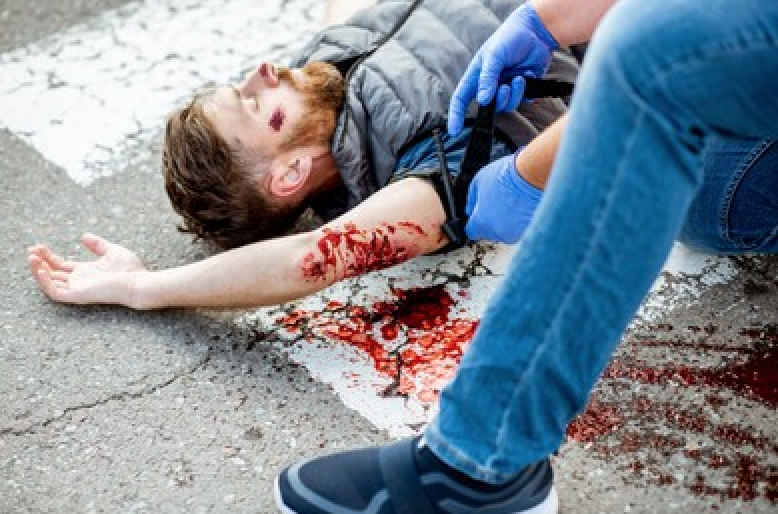
Control The Bleed Canada
Victims suffering severe injuries can bleed out in minutes. A trauma study estimates that 2,400 Canadians bleed to death every year. Emergency services (police, fire, paramedic) rarely arrive on time.
Saving life in these situations is entirely dependant on rapid action by Immediate Responders, ordinary people, who are trained and equipped, and are already on the scene.
This program trains ordinary citizens and first responders to control catastrophic bleeding with military style tourniquets, wound packing and advanced bandaging techniques.
Control The Bleed Canada courses are available online, in-person or in the blended training format which is partly online and partly in our practical lab setting. The practical program uses specially designed training arms that bleed theatrical blood.
Registering for Control The Bleed Training Programs

Purchase Course

Complete Online Training

Call To Book In-Person Training
Enrolling in our Code Eight First Aid, CPR/AED and Control The Bleed programs is simple. Choose your on-line course and purchase with your credit or debit card or use PayPal.
Complete the on-line learning portion at your own speed in the comfort of your home or place of work. Once you have finished the program you can print your temporary certificate and phone us (800) 203-4709 to book your in-person practical training date.
Clicking the button below will take you to the Course Registration page where you can choose
blended, blended with 2-hr or 4-hr practical session.
Training First Responders and ordinary citizens to control catastrophic bleeding.
It all started with the terrible tragedy of the Sandyhook Elementary School massacre in Newtown Connecticut. That event resulted in the Hartford Consensus, which brought experts from many disciplines together to find better methods and procedures in mass casualty incidents.
People can bleed to death from vehicle collisions, workplace incidents, fires & explosions, criminal events and a host of other causes. Brief introduction to surviving an Active Shooter/Attacker event.
Effectively calling 9-1-1. Checking for hazards before entering a danger zone. Importance of biohazard protection. Understanding triage – the importance of prioritizing which victims need help.
Initial patient contact, exposing wounds and rapidly assessing injuries. Identifying life threatening injuries. Understanding the significance of arm/leg, junctional and torso injuries.
Military tourniquets are best. Tourniquet considerations and step by step application. Tourniquet pain and common tourniquet errors.
Evacuating the wound to locate the bleed. Packing the wound with cloth, first aid gauze or hemostatic dressings. Advanced bandaging techniques including the Emergency (Israeli) Bandage.
Treating children. Cleanup and glove removal. Post Traumatic Stress Disorder.
